Exploring Crossdale
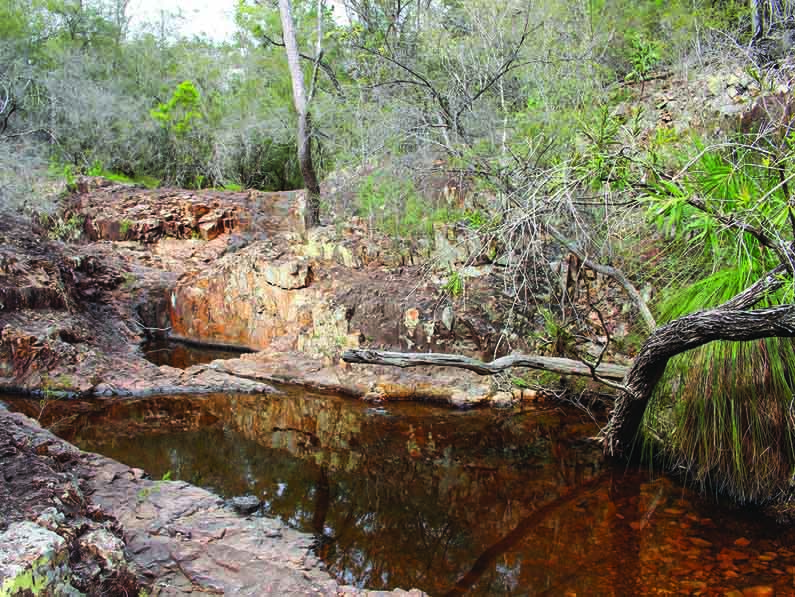
Author: Glenn Leiper
Published: Journal March 2021
Crossdale, not far from Wivenhoe Dam and Esk, in the Somerset Regional Council area, is dominated by rolling grassy hills, grazed by cattle and dotted with the occasional remnant tree … a typical scene in south-eastern Queensland outside of the urban sprawl. However, rising up amongst the hills is a relatively large ridge of volcanic rhyolite to a height of about 240 metres. Those of you who know me, will have experienced my enthusiasm (some might say obsession) with rhyolitic areas and their plants. This area in Crossdale is no exception … what a wonderful botanical treasure.
Crossdale was brought to my attention by Paul Grimshaw, SGAP member and naturalist extraordinaire, who had visited some properties there in the 1990s with the late Lloyd Bird, former SGAP Life Member, who also was a superb field botanist amongst other things. Paul’s enthusiastic description of the plants and the vegetation sent me scurrying up there soon after in search of some of these unusual plants along the roadside. However, it wasn’t until 2017, following an invitation from some of the landowners through Darren McPherson, Natural Area Resource Manager (Land for Wildlife facilitator) with Somerset Regional Council that the area’s hidden gems were revealed to a slightly wider appreciative audience.
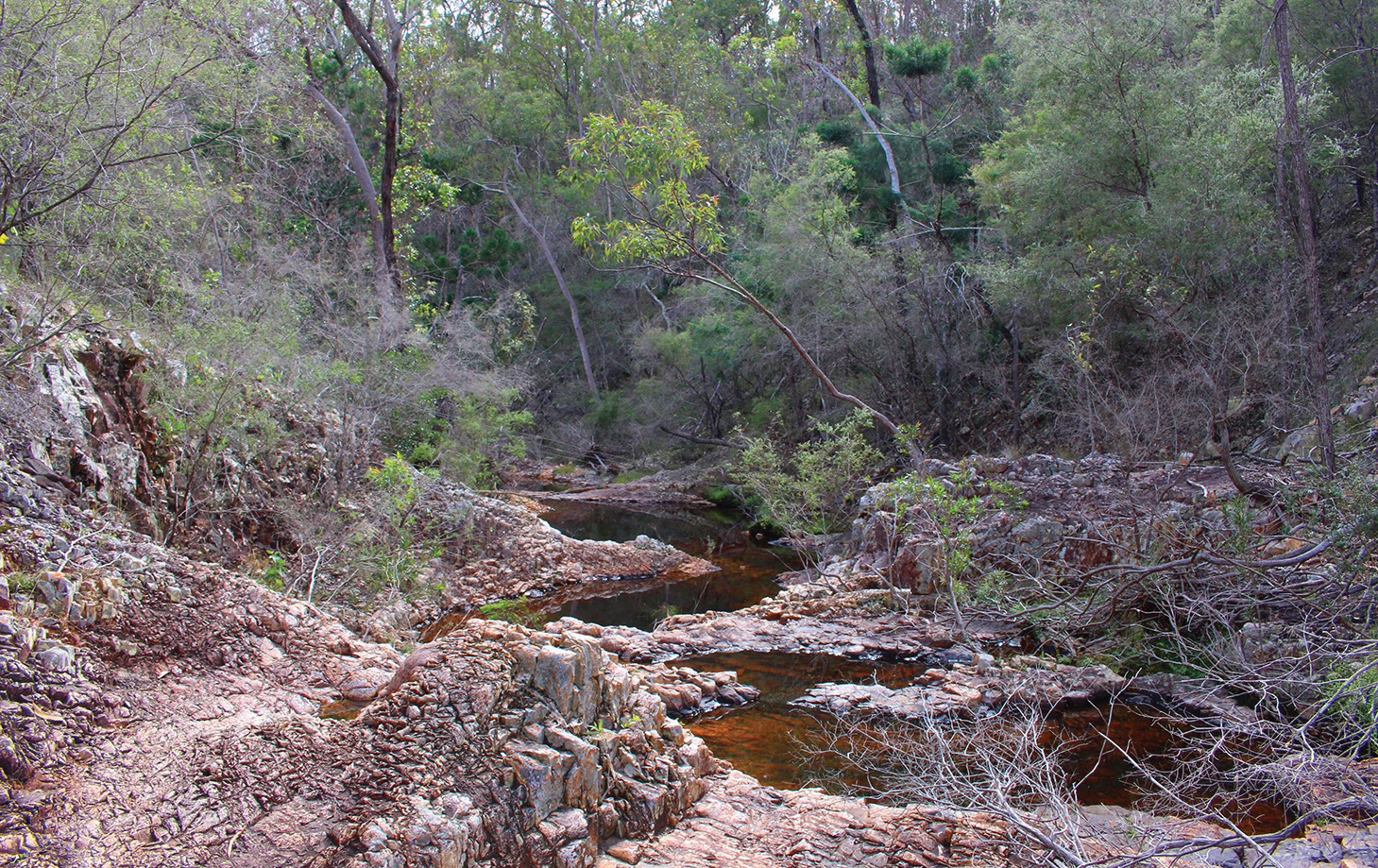
The main gully with waterholes and small waterfalls
Of course, all along, the Crossdale landowners knew they owned superb properties full of interesting landforms, fauna and flora, but maybe were just not fully aware of how interesting some of the flora is. Some of these landowners have been here for 30 years and have withstood extreme drought, fires and torrential downpours. In 2001, three of these adjoining properties’ owners collaborated to form the Bloodwood Creek Nature Refuge which covers 48.5 hectares (120 acres) in recognition of the biodiversity and catchment values. Jan and Jane Harthoorn-Williams, Warren and Alwin Harvey, and Norman ‘Jock’ Smith are those landowners.
The southern side of the ridge is deeply incised in parts by the headwaters of what the locals call Bloodwood Creek and has been scoured down to the bedrock forming rocky platforms, waterholes and waterfalls. Most of the original vegetation is dry eucalypt forest but in small pockets and shaded slopes there are small areas of dry rainforest with even some stands of Hoop Pine.
It was in one of these pockets that a new species of Zieria, sometimes known as Sandfly Bushes or Stinkwoods was discovered. Zieria abscondita Crossdale Zieria was named by Queensland Herbarium principal botanist Paul Forster in 2019 and will ultimately be listed as a threatened species because of its restricted distribution.
As often occurs in nature, where one rare species is found, others will be found also. In plants, this often reflects the unusual geology of the area and quite often the isolated or disjunct nature of the area’s vegetation type. Other threatened species on the properties include Bertya opponens Woolly Bertya, Coleus leiperi (formerly Plectranthus leiperi, Mount Mee Plectranthus), and Kunzea flavescens Yellow Kunzea which dominates many of the exposed rocky outcrops and upper slopes. There’s the occasional gnarled and shrubby Leptospermum oreophilum Sunshine Coast Mountain Tea Tree in some of the gullies which is a real surprise as this species is known otherwise from a few of the mountains on the Sunshine Coast, some 60km away as the crow flies. If only we could travel in time to see why these disjunct plant populations occur so far apart!
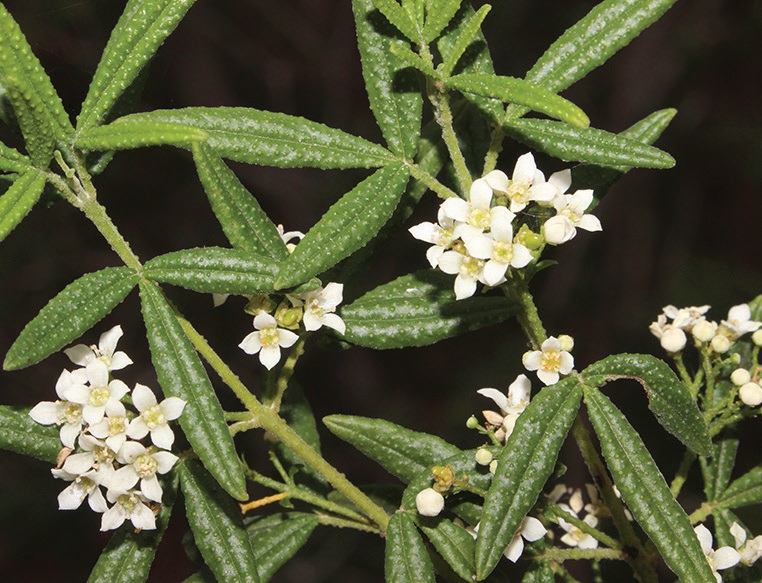
Zieria abscondita Crossdale Zieria only recently named
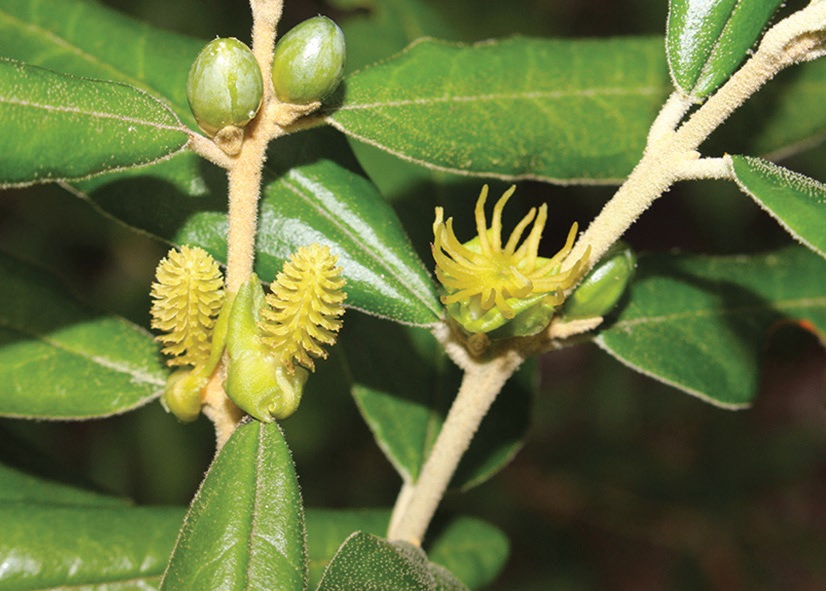
Bertya opponens Woolly Bertya male flowers (left) and a female flower
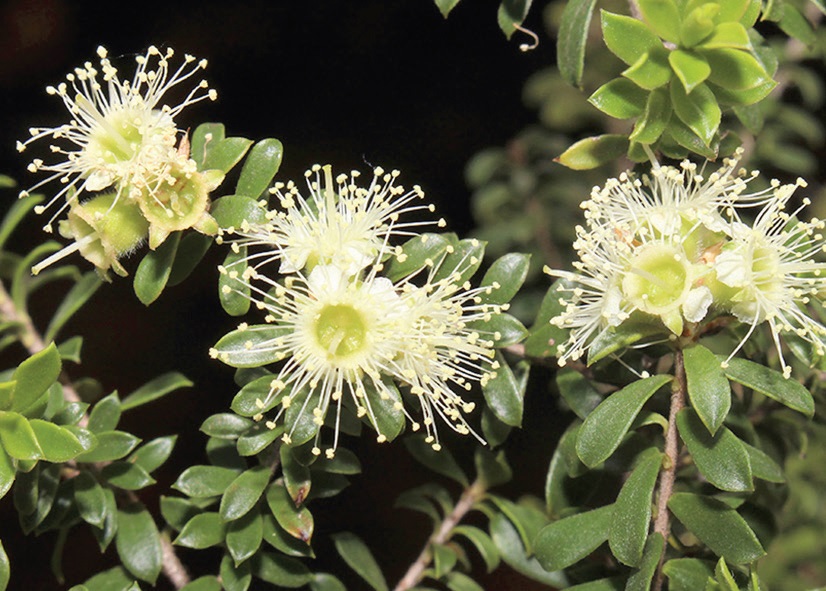
Kunzea flavescens Yellow Kunzea is the most common shrub at the site
The eucalypt forests are dominated by hardy tree species such as Eucalyptus dura Smooth-branched Ironbark, Eucalyptus exserta Queensland Peppermint with its highly aromatic foliage, Corymbia citriodora subsp. variegata Spotted Gum, Eucalyptus helidonica Helidon Mahogany, Corymbia trachyphloia Brown Bloodwood, Lophostemon confertus Brush Box, Alphitonia excelsa Soap Tree, Acacia crassa Curracabah and Acacia neriifolia Oleander Wattle, although the recent extended drought conditions killed off many of the trees especially where soil depth was shallow. Of additional interest here is the white flowering form of Grevillea banksia White Silky Oak which would usually be considered a garden escapee in the south-eastern corner of Queensland, but in the greater Esk district there are scattered colonies that were first reported long before it was used commonly in horticulture. On this rhyolitic ridge, it is common throughout.
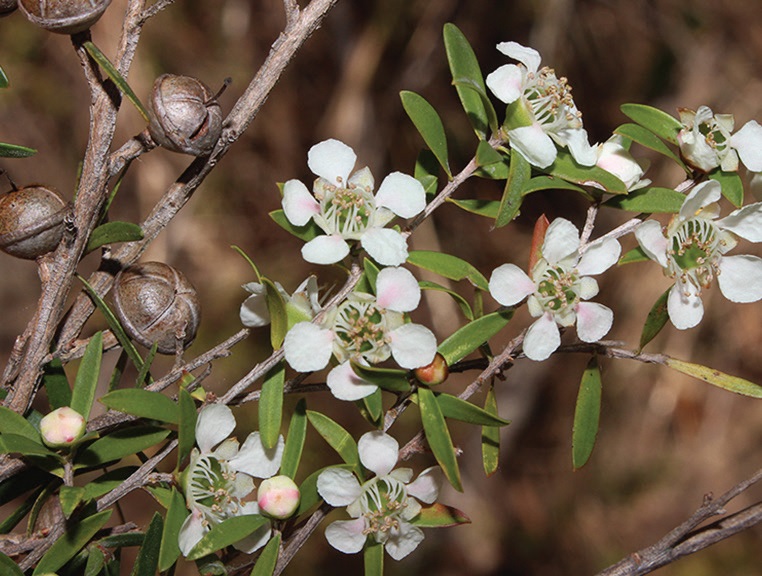
Leptospermum oreophilum Glass House Mountains Tea Tree
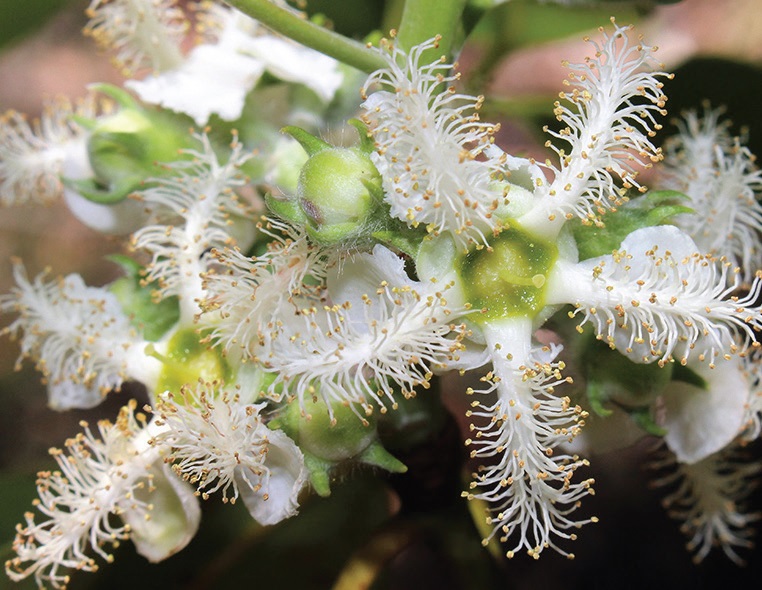
Lophostemon confertus Brush Box flowers

Grevillea banksii White Silky slightly spent flowers
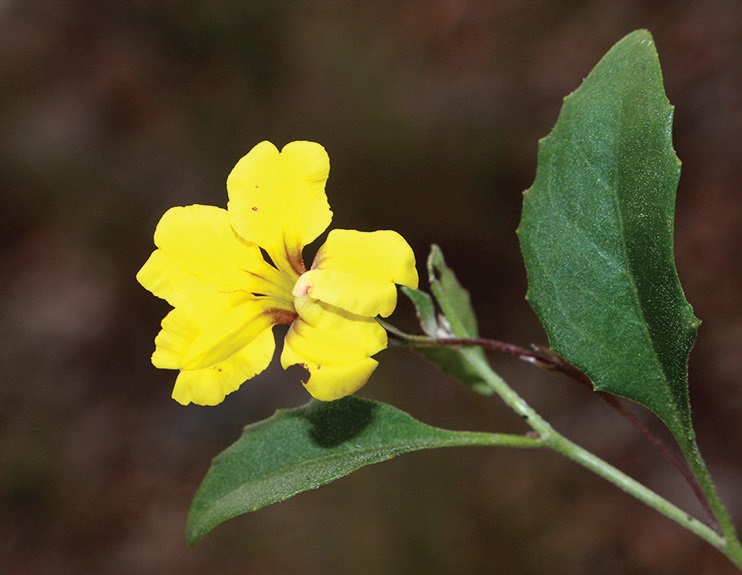
Goodenia hederacea Grey-leaved Goodenia
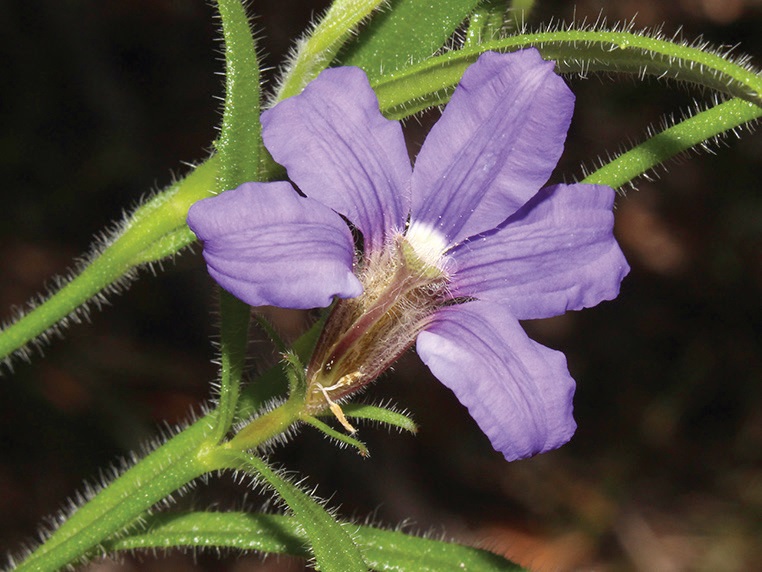
Scaevola ramosissima Hairy Fan Flower
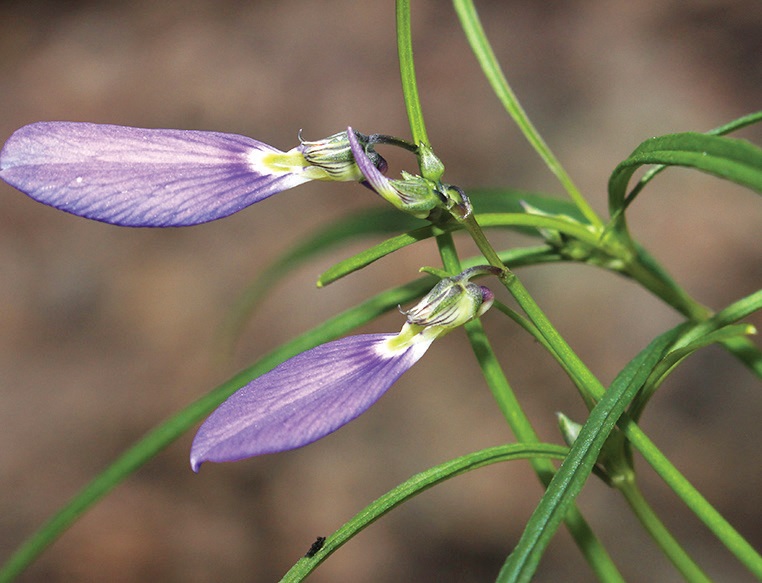
Hybanthus monopetalus Lady’s Slipper
The understorey has a range of shrub species including Yellow Kunzea, Hovea lorata, Hibiscus splendens with huge pink flowers, Dodonaea triangularis Small-leaved Hop Bush and Woolly Bertya. The ground level is dominated by clump-forming native grasses such as Aristida species (wiregrasses) and a Calyptochloa species as well as the spreading Ottochloa gracillima Graceful Grass. Scattered amongst the grasses are many colourful flowering sub-shrubs and herbaceous species such as Goodenia hederacea Greyleaved Goodenia, Hibbertia linearis var. obtusifolia Grey Guinea Bush, Scaevola ramosissima Hairy Fan Flower with its 35mm stunning purple flowers, Hybanthus monopetalus Lady’s Slipper, Afrohybanthus stellarioides Spade Flower and Trachymene incisa Native Parsnip.
On the southern slopes, there is a different suite of shade-loving species. Under the Crossdale Zieria shrubs, lush-green mat-forming plants such as the very uncommon Actinotus gibbonsii Gibbons’ Flannel Flower and Hydrocotyle geraniifolia Forest Pennywort are seen mainly after autumn rains. These two species have been recorded very rarely in Queensland and it was a treat to find them here, especially in such prolific numbers. Occasional terrestrial orchids such as Pterostylis nutans Nodding Greenhood, Caladenia catenata White Fingers, Acianthus fornicatus Pixie Caps and Chiloglottis species (Wasp Orchid) occur in small colonies. In past years one of the landowners has photographed others, including Corybas and Diuris species.
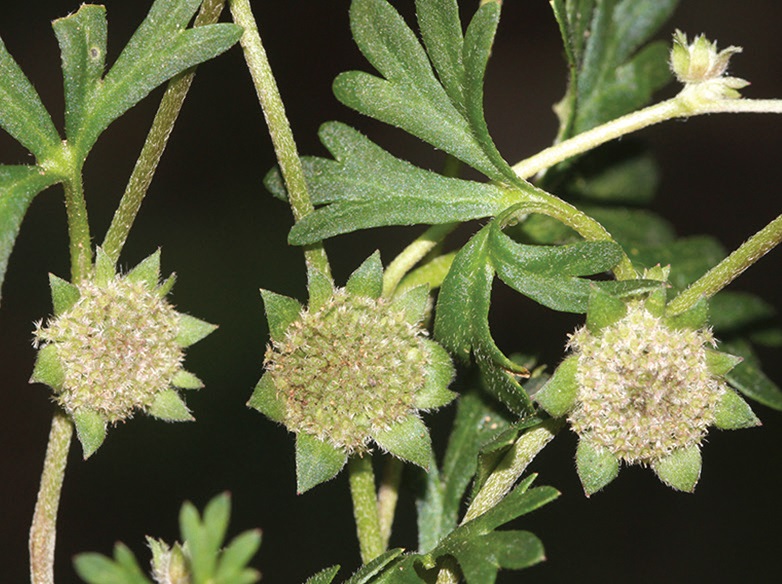
Actinotus gibbonsii Gibbons Flannel Flower
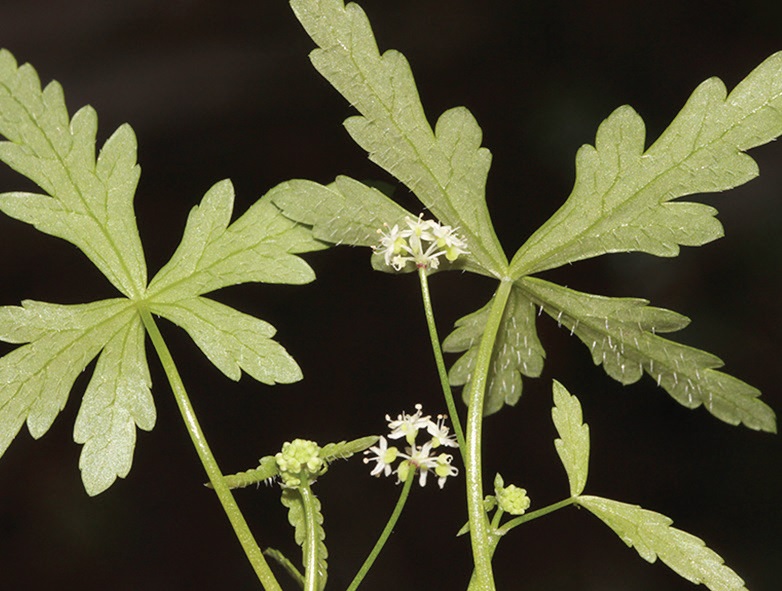
The delicate and small flowers of Hydrocotyle geraniifolia Forest Pennywort
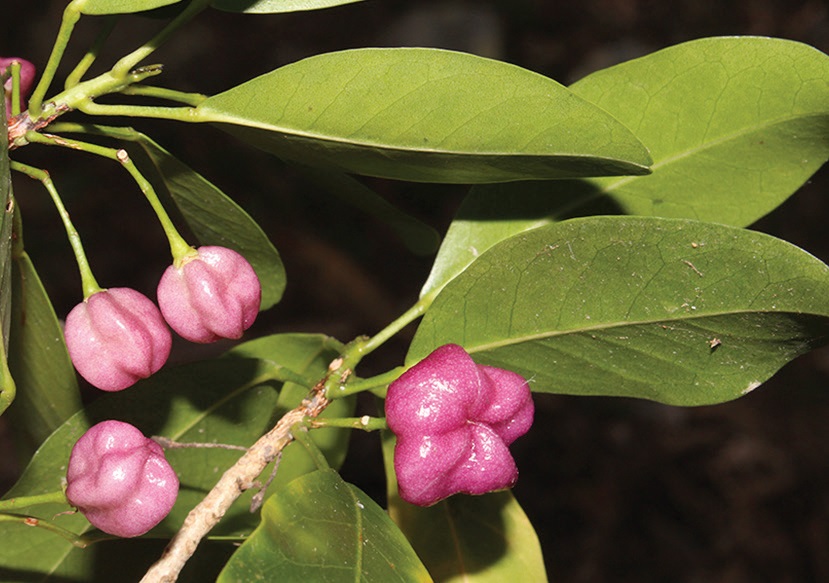
Acronychia laevis Glossy Acronychia fruit
The landowners have spent many years removing Lantana and other weeds leaving the Nature Refuge looking as pristine as nature intended in most areas, providing habitat for many rare plants and some of those ‘Aussie’ iconic animals such as koalas, gliders and phascogales. To say I was most impressed with the landowners’ goal of preserving the local natural environment as a Nature Refuge is an understatement. This reserve is a flora and fauna treat and I congratulate not only these folk at Crossdale for their initiative but also all the other similar-minded landowners throughout the state who are looking after their properties in a similar fashion. I must also congratulate Darren McPherson and other Land for Wildlife officers for supporting these landowners in their desire to see a bright future for their local flora and fauna.
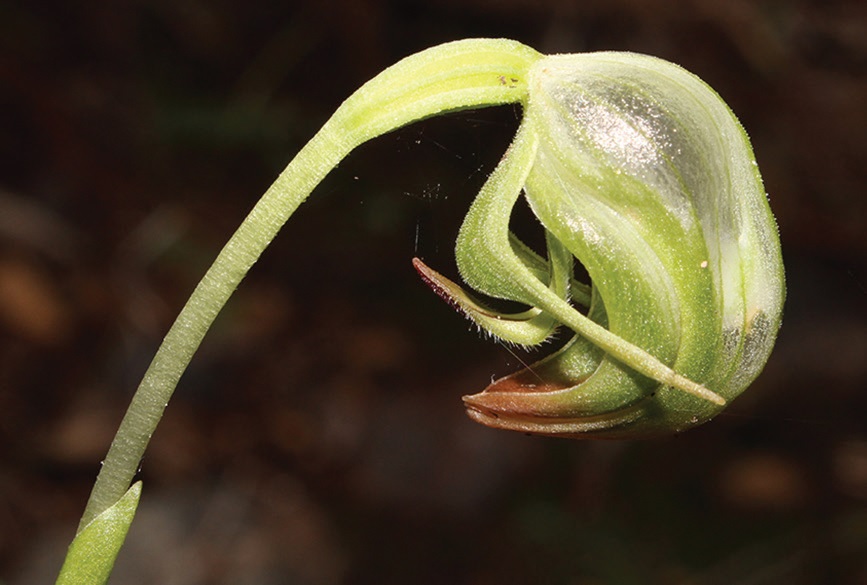
Pterostylis nutans Nodding Greenhood
